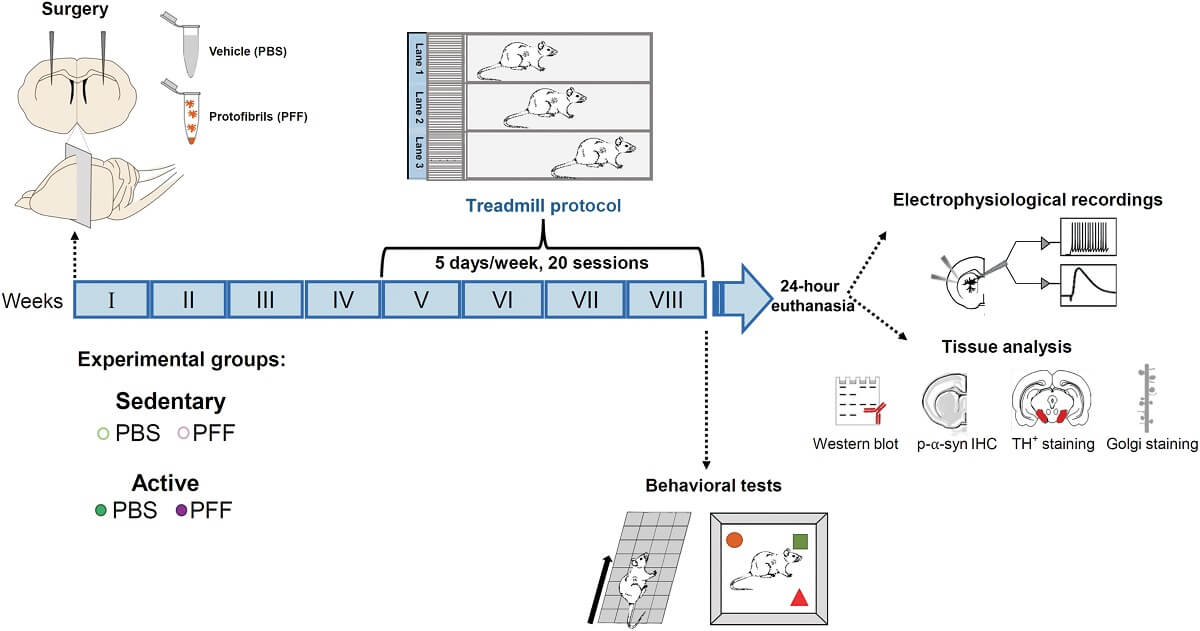MILAN, Italy — Regular treadmill exercise may help in preventing Parkinson’s disease, according to new research. These findings provide hope for non-drug treatments, like physical activity, to slow down the progression of the disease.
According to researchers in Italy, engaging in intensive exercise, such as daily treadmill runs, can stimulate the production of brain-derived neurotrophic factor (BDNF). It is a protein critical for the survival and growth of brain neurons.
By promoting the health of neurons, BDNF enhances the brain’s capacity to reorganize and adapt, which is crucial for learning and memory. Moreover, BDNF aids in reducing the spread of pathological alpha-synuclein aggregates, associated with neurodegenerative disorders like Parkinson’s.
These aggregates gradually impair neurons responsible for motor control in specific brain regions. By limiting their spread, motor skills are less severely affected. Preserving vital neurons also helps maintain people’s ability to process and understand visual information.

The research team observed an increase in BDNF levels in the brains of animals with early-stage Parkinson’s disease after daily treadmill exercise for four weeks.
“We have discovered a never observed mechanism, through which exercise performed in the early stages of the disease induces beneficial effects on movement control that may last over time even after training is suspended,” says Dr. Paolo Calabresi, corresponding author and neurology professor at the Rome Campus of the Catholic University of Sacred Heart, in a media release.
Calabresi further suggests that identifying new therapeutic targets and functional markers could aid in developing non-drug treatments to complement current drug therapies. Parkinson’s disease is a neurological condition that affects balance, and coordination, and can cause involuntary movements like stiffness and shaking.
“Our research team is involved in a clinical trial to test whether intensive exercise can identify new markers to monitor the disease progression slowing in early-stage patients and the profile of the progression of the disease” adds Dr. Calabresi.
Nearly one million people in the United States are living with Parkinson’s disease. That number is expected to rise to 1.2 million by 2030.
As Parkinson’s disease involves neuroinflammatory and neuroimmune components in its early stages, the study will also explore the role of glial cells, specialized cells providing support to neurons and their environment. This investigation aims to unveil the molecular and cellular mechanisms underlying the observed benefits of exercise.
The study is published in the journal Science Advances.
South West News Service writer Alice Clifford contributed to this report.


Does it have to be a tredmill. Can i just run outside without buying or signing up for a gym membership. Or this article is sponsored by a tredmill company trying to boast sales.
Yes, it only works on a treadmill, and specifically a Park and Sons treadmill. Other treadmills won’t work.
How longg does one need to run and at what RPE???